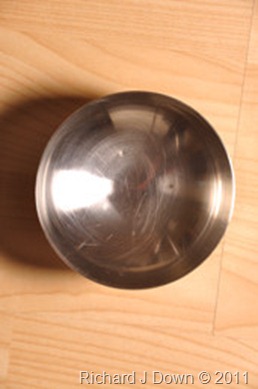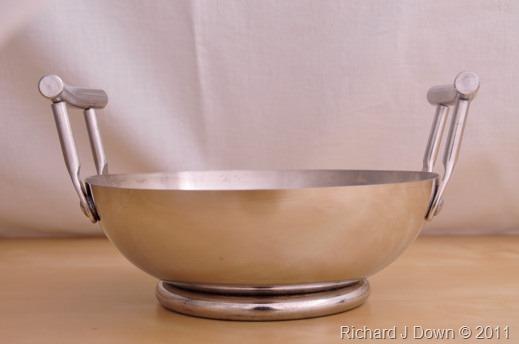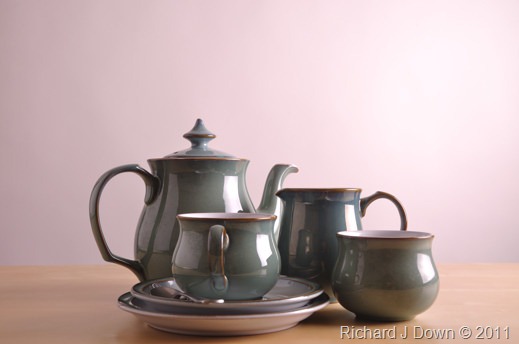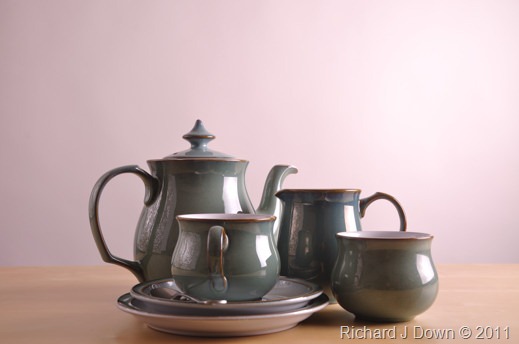Exercise: Contrast and shadow fill: This exercise will demonstrate how you can control the contrast with photographic lighting by using reflectors.
This still life was set up as described in the course notes, i.e. with a light to one side of the object and the camera at 90º and on the same level as the object. I chose to photograph some china which was highly glazed. This has given a lot of highly defined reflections which are a bit distracting. All photographs had these camera settings. Manual 1/125s 32mm ISO100 WB: flash. The f stop for each exposure is noted at the top of the frame with the type and quality of reflector used
| 8116: 1/125s f13 48mm ISO100WB: flash |
 |
Exercise: Shiny surfaces. The objective here is to construct a light tent with tracing paper to photograph a highly reflective object using studio lighting.
| 8125 f11 | 8126 f11 |
 |  |
| 8127: f11 | 8128: f11 |
 |  |
I then set up something I had tried before, a light tent made with a background support pole. two lighting stands and a cotton bedsheet:

I then photographed the stainless steel balti dish again, with and without the light tent and got better results. Camera settings: 1/125s f13 40mm ISO200 WB: flash
| 8224: without light tent |
 |
| 8220: with light tent |
 |







No comments:
Post a Comment